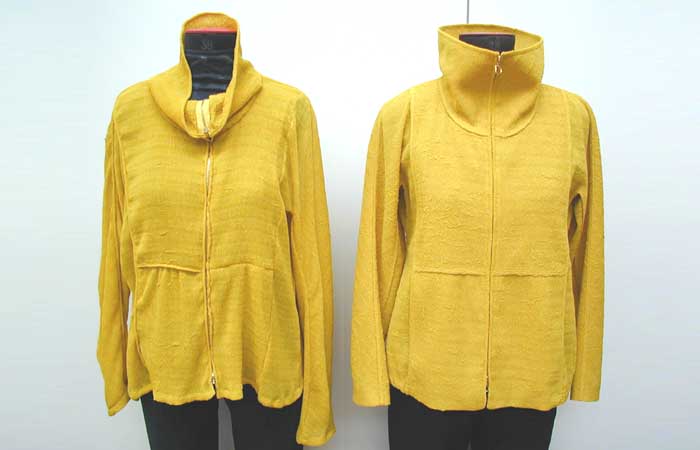
The impact of high-performance interlining in garment durability
The impact of interlining on how long clothes last is clear, and it will keep shaping the future of fashion, affirms Sivasailam G.
Fashion is an ever-changing world, with trends coming and going in the blink of an eye. Yet, amidst this constant flux, there exists a crucial but often overlooked component that breathes life into our wardrobes – the interlining. Concealed from view, interlinings are the unsung heroes responsible for bestowing structure, durability, and enduring allure upon our garments. As we navigate the ever-shifting landscape of fashion, it is the high-performance interlining that serves as our unwavering guardian, ensuring that our beloved clothes withstand the test of time.
In the past, interlinings were typically crafted from natural fibres such as cotton or silk. While these materials provided adequate support, they lacked durability when subjected to repeated wear and washing. However, with the advent of synthetic fibres and the refinement of manufacturing processes, a new era of high-performance interlinings has emerged. These modern interlinings are created using state-of-the-art materials and coatings, resulting in unparalleled strength, stability, and resilience. This means that garments maintain their shape and structure even in the most challenging circumstances. The evolution of high-performance interlining has truly transformed the way garments are made, ensuring that they are not only stylish but also long-lasting and reliable.
The role of interlining in garment durability
Throughout the lifespan of a garment, it faces various challenges such as regular wear and tear, frequent washing, and treatments like softeners and enzyme washes. These challenges can lead to issues like the delamination, forming bubbles, or changing shape. These problems not only affect the appearance of the garment but also impact its functionality. High-performance interlinings play a crucial role in addressing these challenges by acting as a protective barrier. They form a strong bond with the outer fabric and are resistant to post-processing treatments, thus preventing issues like delamination, bubbling, pilling, and dimensional changes. By maintaining the shape, stability, and integrity of the garment, interlinings ensure that it retains its original appearance and performance over time. In essence, interlinings act as a shield, safeguarding the garment from the rigors of daily use and external treatments, thereby prolonging its lifespan. This not only benefits the consumer by reducing the need for frequent replacements but also contributes to sustainable fashion by promoting the longevity of clothing.
The importance of material selection and manufacturing process
The selection of base materials, adhesive coatings, and manufacturing processes is crucial in determining the durability and effectiveness of interlinings. Different fabrics and garments require specific combinations of interlinings tailored to their unique properties and intended uses. For delicate or heat-sensitive fabrics, it’s important to use interlinings with lower fusing temperatures to prevent any damage during the bonding process. On the other hand, heavy-duty or outdoor garments benefit from interlinings with superior bonding strength and resistance to environmental factors such as moisture and abrasion. The manufacturing methods employed also significantly impact the durability of interlined garments. Proper bonding techniques, including precise temperature control and pressure application, are essential for achieving a strong and long-lasting bond between the interlining and the outer fabric. Additionally, implementing quality control measures during production is vital for identifying and rectifying any defects or inconsistencies that could potentially compromise the durability of the garment. In summary, careful consideration of material selection and meticulous attention to the manufacturing process are fundamental in ensuring that interlined garments meet the specific demands of their intended use, resulting in enhanced durability and longevity.
Challenges and innovations
Leading the charge in sustainable fashion, the development of innovative products like biodegradable fusible interlinings, organic and recycled non-woven interlinings, and other sustainable textile solutions addresses the growing demand for environmentally friendly materials in the apparel industry. By incorporating recycled or biodegradable fibres into their product range, companies are driving positive change for humans, animals, and the environment while prioritizing wearer comfort. This commitment to sustainability is evident in products like Comfortemp fiberball padding made from 70 per cent recycled polyester, which reduces the carbon footprint, and Comfortemp Tencel, the industry’s first 100 per cent biodegradable padding. These initiatives propel the fashion industry towards a more sustainable future.
Towards sustainability
In response to the growing concern for sustainability in the apparel industry, companies are introducing sustainable interlining solutions. A notable achievement is the development of biodegradable interlinings that use a natural adhesive, breaking down harmlessly and reducing landfill waste while minimizing environmental impact. These biodegradable interlinings offer exceptional sustainability without compromising performance, making them ideal for conscious consumers and environmentally aware brands. Moreover, the commitment to sustainability extends to the use of recycled materials. Introducing interlinings made from discarded polyester (rPET) bottles effectively repurposes waste materials and contributes to a circular economy. This approach reduces resource consumption and minimizes waste and environmental harm. With these sustainable interlining solutions, companies are leading the industry’s efforts towards a more environmentally friendly and responsible future.
Meeting the demands of modern fashion
In today’s fast-paced fashion world, consumers expect clothes that not only look good but also work well and last a long time. Whether it’s sporty outfits for an active lifestyle or formal wear for work, the versatility and durability of interlined clothing are really important. To meet these demands, companies have made big steps in creating new technologies and materials to improve how interlined clothes perform and how long they last. One important development is the Xtreme technology, which makes interlined clothes bond better and work well with lots of different fabrics and treatments. This means that interlined clothes not only stay stylish but also stay strong, even with everyday use.
The future of high-performance interlining
As the clothing industry keeps changing, high-performance interlining will also evolve to play a bigger role in making clothes. With new materials, better ways of making clothes, and a focus on being kind to the environment, the future looks bright for interlined clothes that are tough, useful, and eco-friendly. By being open to new ideas, caring about quality and the environment, and working with others in the industry, manufacturers can keep making interlined clothes even better. This means reducing waste and using less energy while also making clothes that last longer and work well. The impact of interlining on how long clothes last is clear, and it will keep shaping the future of fashion. In short, high-performance interlining is really important for making clothes that last and stay strong in many different industries. By providing essential support and strength, interlinings help keep clothes looking good and lasting a long time, cutting down on how often they need to be replaced. The future of interlined clothes looks good, thanks to new materials, technologies, and efforts to be eco-friendly. These changes aim to make clothes that are tough and good for the environment.
About the author:

Sivasailam G is the Director & CEO of the Freudenberg Regional Corporate Centre India. He is also the MD at Freudenberg Performance Materials India.



